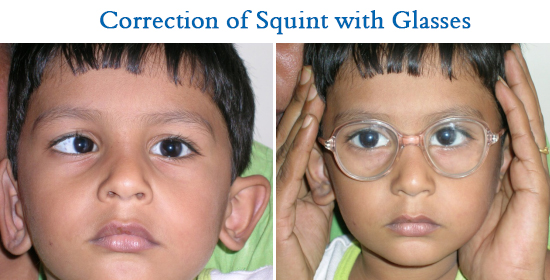
Strabismus or more commonly referred to as Squint is a condition in which a person’s eyes are not properly aligned. While one eye is focussed on a particular spot, the other eye may focus in another direction. This condition is caused due to the incoordination between the muscles controlling the movement of the eyes.
The type of Strabismus are categorised by postion of the eyes
- When the eye turns inwards, the condition is called Esotropia.
- When the eye turns outwards, the condition is called Exotropia.
- When the eye turns upwards, the condition is called Hypertropia.
- When the eye turns downwards, the condition is called Hypotropia.
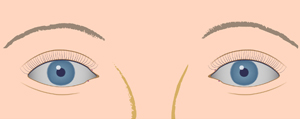
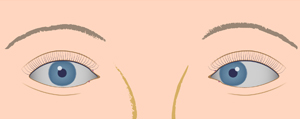
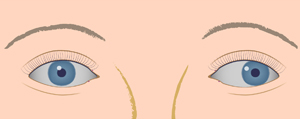
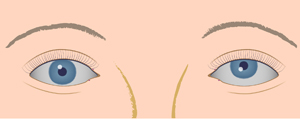
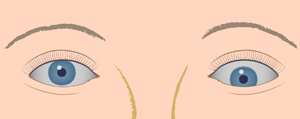
- An obvious misalignment of the eyes
- Tiredness/fatigue/ prolonged illness may lead to squinting among infants.
- A child has one eye closed/ looks away when speaking with someone.
- Lazy eye - The brain ignores input from one of the eyes.
- Congenital- The Condition is prevalent from birth.
- Hereditary- The Condition runs within families.
- Strabismus may occur due to a lesion on a cranial nerve.
- Uncorrected Refractive error - This makes the eye turn inwards.
- Hydrocephalus- Cerebrospinal fluid accumulates in and around the brain.
- Others - Viral infections like measles and Noonan syndrome may also cause Strabismus.
- On routine eye checkup
- The Hirschberg test is used to diagnose the condition of Strabismus. This test involves shining a light in the eye and observing the reflection of light from the Cornea. A well aligned eye will result the light to go to the center of both corneas. If it does not, the test can determine whether the patient has exotropia, hypertropia, esotropia or hypotropia
- Retina and optic nerve tests can help diagnose Strabismus.
An early diagnosis of Strabismus will help you get an effective treatment.
- Eye Glasses/ Contact Lenses - In some cases, this may be the only treatment needed.
- Vision Therapy - Your doctor might prescribe a standard set of visual exercises to improve eye coordination and eye focusing.
- Corrective Surgery - Surgery can be used to realign the eyes. A muscle connected to the eye is tightened / moved to a new position to get the right balance.
- Medication - Botulinum toxin injections are given into the eye muscles which allow eyes to realign by weakening the muscles.

After care following the Surgery
Following surgery, an eye pad must be put over the respective eye and can be removed when suggested. The aim is to return to daily activities at the earliest. Eye drops will be prescribed for a period of about four weeks to reduce the swelling. There are no restrictions to diet and normal routine activities.
Risks of surgery
- Red eye occurrence is very common post-surgery. This may take up to 4 weeks to return to normalcy. This has no toll on the success of the surgery.
- There might be an occurrence of double vision post-surgery. This resolves itself in a week or two.
- Minor corrections may be needed in a small number of patients depending on the type and severity of Strabismus. This can be corrected by both surgical and non-surgical means.


